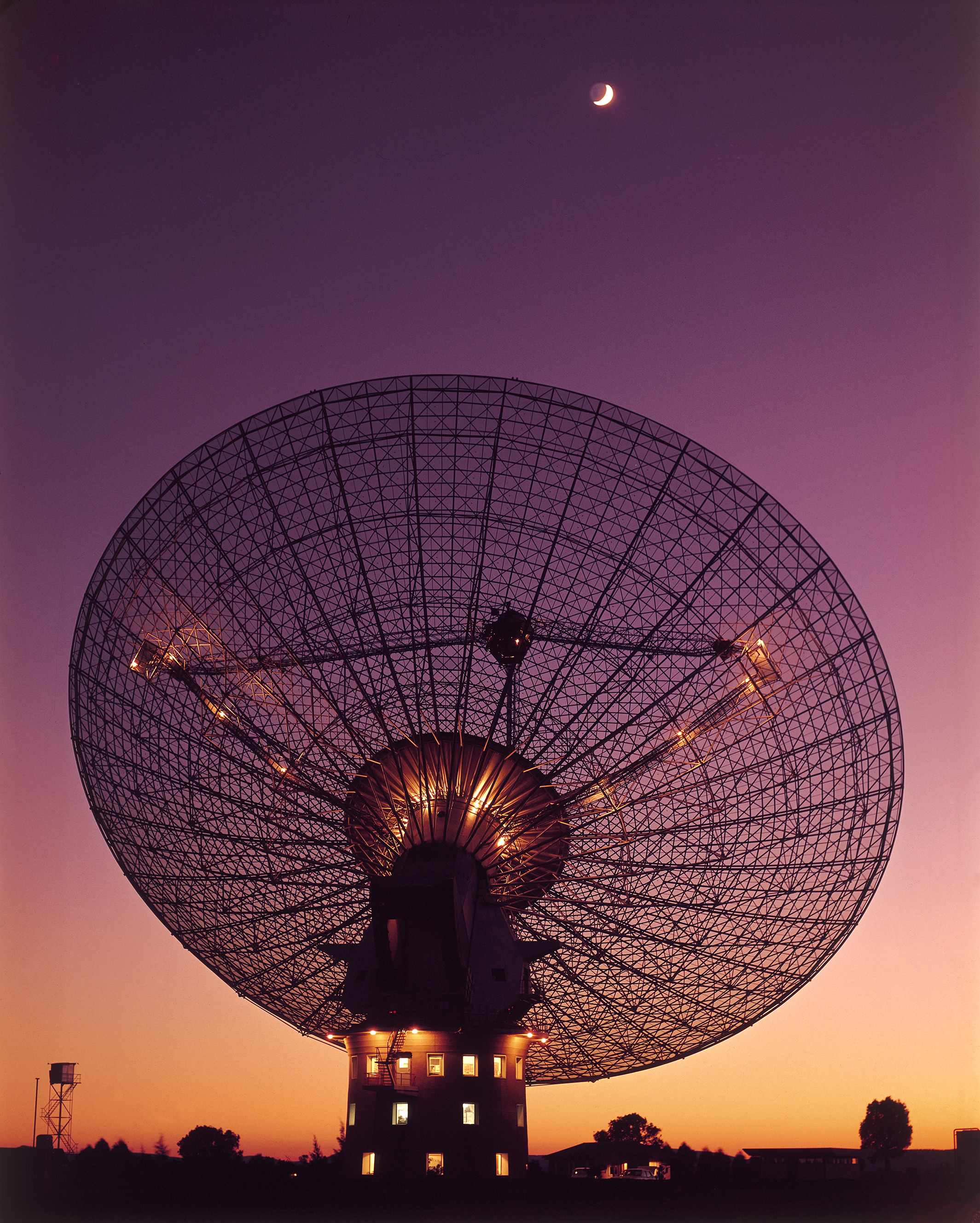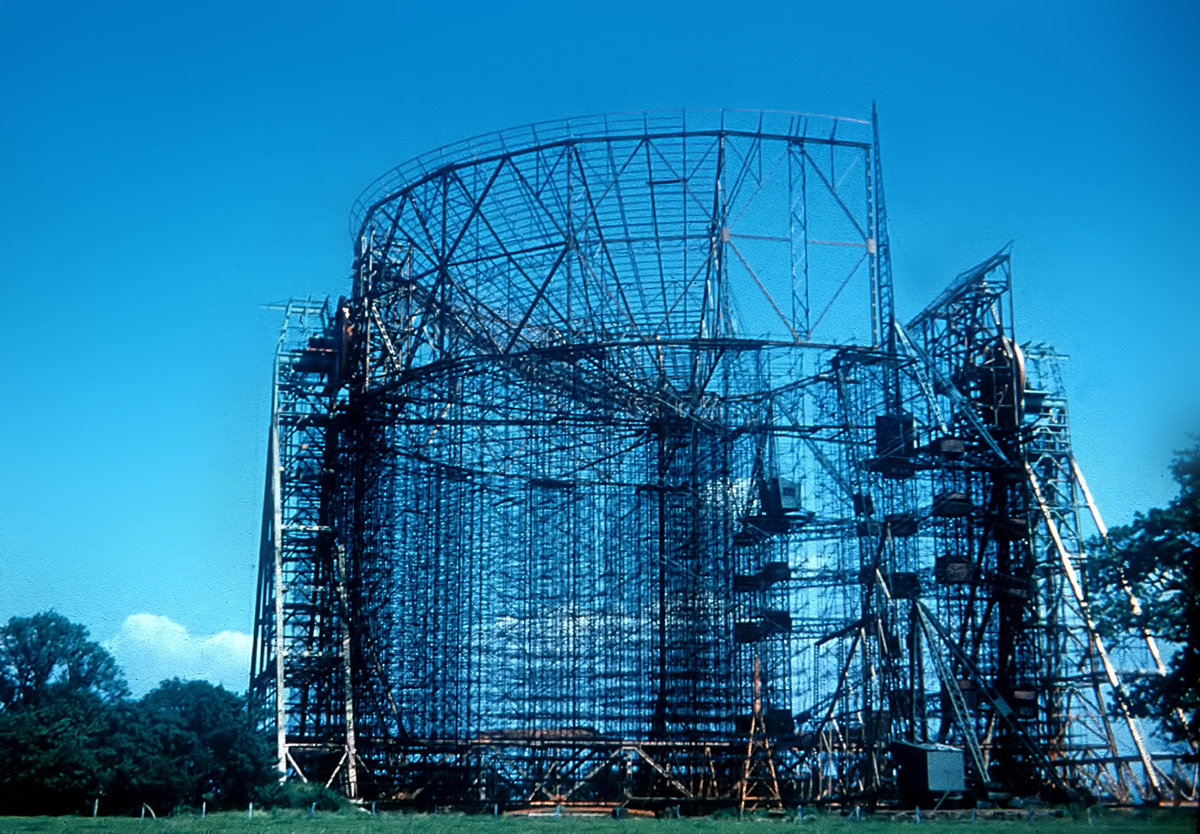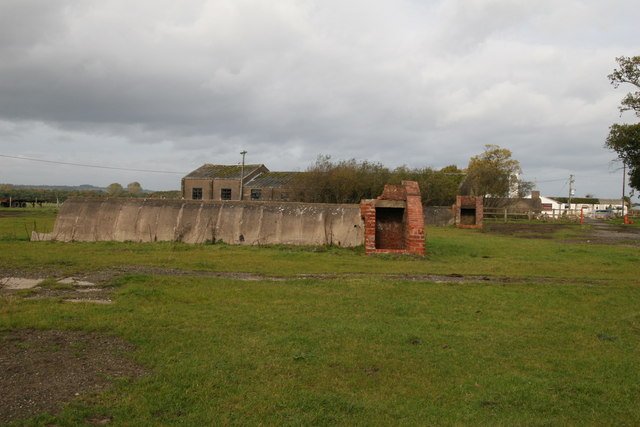|
Mark III (radio Telescope)
The Mark III was a portable and fully steerable radio telescope located at Wardle, near Nantwich, Cheshire in the north-west of England. Constructed in 1966, it was remotely controlled from Jodrell Bank Observatory, and was mainly used as part of the MERLIN radio telescope network. It was designed by Charles Husband at the instigation of Bernard Lovell.Lovell, ''Jodrell Bank Telescopes'', p. 12 Technical specifications Funding for the telescope was obtained in 1963 from the DSIR. The telescope was designed by Husband and Co. consulting engineers, and was constructed by Fairey Engineering. It started observations in July 1967. The telescope could be controlled either locally, or by remote control over UHF and microwave links from Jodrell Bank Observatory (normally the latter).Palmer and Rowson (1968) Similar to the Mark II, it had an elliptical dish with a major axis of 125 ft/38.1m and a minor axis of 83 ft 4 in/25.4m. Unlike the Mark II, however, the dish is ... [...More Info...] [...Related Items...] OR: [Wikipedia] [Google] [Baidu] |
Radio Telescope
A radio telescope is a specialized antenna (radio), antenna and radio receiver used to detect radio waves from astronomical radio sources in the sky. Radio telescopes are the main observing instrument used in radio astronomy, which studies the radio frequency portion of the electromagnetic spectrum, just as optical telescopes are used to make observations in the visible light, visible portion of the spectrum in traditional optical astronomy. Unlike optical telescopes, radio telescopes can be used in the daytime as well as at night. Since astronomical radio sources such as planets, stars, nebulas and galaxy, galaxies are very far away, the radio waves coming from them are extremely weak, so radio telescopes require very large antennas to collect enough radio energy to study them, and extremely sensitive receiving equipment. Radio telescopes are typically large Parabolic antenna, parabolic ("dish") antennas similar to those employed in tracking and communicating with satellites an ... [...More Info...] [...Related Items...] OR: [Wikipedia] [Google] [Baidu] |
Azimuth
An azimuth (; from ) is the horizontal angle from a cardinal direction, most commonly north, in a local or observer-centric spherical coordinate system. Mathematically, the relative position vector from an observer ( origin) to a point of interest is projected perpendicularly onto a reference plane (the horizontal plane); the angle between the projected vector and a reference vector on the reference plane is called the azimuth. When used as a celestial coordinate, the azimuth is the horizontal direction of a star or other astronomical object in the sky. The star is the point of interest, the reference plane is the local area (e.g. a circular area with a 5 km radius at sea level) around an observer on Earth's surface, and the reference vector points to true north. The azimuth is the angle between the north vector and the star's vector on the horizontal plane. Azimuth is usually measured in degrees (°), in the positive range 0° to 360° or in the signed ... [...More Info...] [...Related Items...] OR: [Wikipedia] [Google] [Baidu] |
Nature (journal)
''Nature'' is a British weekly scientific journal founded and based in London, England. As a multidisciplinary publication, ''Nature'' features Peer review, peer-reviewed research from a variety of academic disciplines, mainly in science and technology. It has core editorial offices across the United States, continental Europe, and Asia under the international scientific publishing company Springer Nature. ''Nature'' was one of the world's most cited scientific journals by the Science Edition of the 2022 ''Journal Citation Reports'' (with an ascribed impact factor of 50.5), making it one of the world's most-read and most prestigious academic journals. , it claimed an online readership of about three million unique readers per month. Founded in the autumn of 1869, ''Nature'' was first circulated by Norman Lockyer and Alexander MacMillan (publisher), Alexander MacMillan as a public forum for scientific innovations. The mid-20th century facilitated an editorial expansion for the j ... [...More Info...] [...Related Items...] OR: [Wikipedia] [Google] [Baidu] |
Oxford University Press
Oxford University Press (OUP) is the publishing house of the University of Oxford. It is the largest university press in the world. Its first book was printed in Oxford in 1478, with the Press officially granted the legal right to print books by decree in 1586. It is the second-oldest university press after Cambridge University Press, which was founded in 1534. It is a department of the University of Oxford. It is governed by a group of 15 academics, the Delegates of the Press, appointed by the Vice Chancellor, vice-chancellor of the University of Oxford. The Delegates of the Press are led by the Secretary to the Delegates, who serves as OUP's chief executive and as its major representative on other university bodies. Oxford University Press has had a similar governance structure since the 17th century. The press is located on Walton Street, Oxford, Walton Street, Oxford, opposite Somerville College, Oxford, Somerville College, in the inner suburb of Jericho, Oxford, Jericho. ... [...More Info...] [...Related Items...] OR: [Wikipedia] [Google] [Baidu] |
Mike Peel
Mike may refer to: Animals * Mike (cat), cat and guardian of the British Museum * Mike the Headless Chicken, chicken that lived for 18 months after his head had been cut off * Mike (chimpanzee), a chimpanzee featured in several books and documentaries Arts * Mike (miniseries), a 2022 Hulu limited series based on the life of American boxer Mike Tyson * Mike (2022 film), a Malayalam film produced by John Abraham * ''Mike'' (album), an album by Mike Mohede * ''Mike'' (1926 film), an American film * Mike (musician), American rapper, songwriter and record producer * ''Mike'' (novel), a 1909 novel by P. G. Wodehouse * "Mike" (song), by Elvana Gjata and Ledri Vula featuring John Shahu * Mike (''Twin Peaks''), a character from ''Twin Peaks'' * "Mike", a song by Xiu Xiu from their 2004 album ''Fabulous Muscles'' * mike. (musician), American rapper and baseball player formerly known as Mike Stud Businesses * Mike (cellular network), a defunct Canadian cellular network * Mike and Ike, ... [...More Info...] [...Related Items...] OR: [Wikipedia] [Google] [Baidu] |
Arcseconds
A minute of arc, arcminute (abbreviated as arcmin), arc minute, or minute arc, denoted by the symbol , is a unit of angular measurement equal to of a degree. Since one degree is of a turn, or complete rotation, one arcminute is of a turn. The nautical mile (nmi) was originally defined as the arc length of a minute of latitude on a spherical Earth, so the actual Earth's circumference is very near . A minute of arc is of a radian. A second of arc, arcsecond (abbreviated as arcsec), or arc second, denoted by the symbol , is a unit of angular measurement equal to of a minute of arc, of a degree, of a turn, and (about ) of a radian. These units originated in Babylonian astronomy as sexagesimal (base 60) subdivisions of the degree; they are used in fields that involve very small angles, such as astronomy, optometry, ophthalmology, optics, navigation, land surveying, and marksmanship. To express even smaller angles, standard SI prefixes can be employed; the milliarcsec ... [...More Info...] [...Related Items...] OR: [Wikipedia] [Google] [Baidu] |
Lovell Telescope
The Lovell Telescope ( ) is a radio telescope at Jodrell Bank Observatory, near Goostrey, Cheshire, in the north-west of England. When construction was finished in 1957, the telescope was the largest steerable dish radio telescope in the world at in diameter; it is now the third-largest, after the Green Bank Telescope, Green Bank telescope in West Virginia, United States, and the Effelsberg 100-m Radio Telescope, Effelsberg telescope in Germany. It was originally known as the "250 ft telescope" or the Radio Telescope at Jodrell Bank, before becoming the Mark I telescope around 1961 when future telescopes (the Mark II (radio telescope), Mark II, Mark III (radio telescope), III, and IV) were being discussed.Lovell, ''The Jodrell Bank Telescopes'' It was renamed to the Lovell Telescope in 1987 after Sir Bernard Lovell, and became a Grade I listed building in 1988. The telescope forms part of the MERLIN and European VLBI Network arrays of radio telescopes. Both Bernard Lovell and Ch ... [...More Info...] [...Related Items...] OR: [Wikipedia] [Google] [Baidu] |
Horse Power
Horsepower (hp) is a unit of measurement of power, or the rate at which work is done, usually in reference to the output of engines or motors. There are many different standards and types of horsepower. Two common definitions used today are the imperial horsepower as in "hp" or "bhp" which is about , and the metric horsepower as in "cv" or "PS" which is approximately . The electric horsepower "hpE" is exactly , while the boiler horsepower is 9809.5 or 9811 watts, depending on the exact year. The term was adopted in the late 18th century by Scottish engineer James Watt to compare the output of steam engines with the power of draft horses. It was later expanded to include the output power of other power-generating machinery such as piston engines, turbines, and electric motors. The definition of the unit varied among geographical regions. Most countries now use the SI unit watt for measurement of power. With the implementation of the EU Directive 80/181/EEC on 1 January 2010, ... [...More Info...] [...Related Items...] OR: [Wikipedia] [Google] [Baidu] |
Piston
A piston is a component of reciprocating engines, reciprocating pumps, gas compressors, hydraulic cylinders and pneumatic cylinders, among other similar mechanisms. It is the moving component that is contained by a cylinder (engine), cylinder and is made gas-tight by piston rings. In an engine, its purpose is to transfer force from expanding gas in the cylinder to the crankshaft via a piston rod and/or connecting rod. In a pump, the function is reversed and force is transferred from the crankshaft to the piston for the purpose of compressing or ejecting the fluid in the cylinder. In some engines, the piston also acts as a valve by covering and uncovering Porting (engine)#Two-stroke porting, ports in the cylinder. __TOC__ Piston engines Internal combustion engines An internal combustion piston engine, internal combustion engine is acted upon by the pressure of the expanding combustion gases in the combustion chamber space at the top of the cylinder. This force then acts dow ... [...More Info...] [...Related Items...] OR: [Wikipedia] [Google] [Baidu] |
Elevation
The elevation of a geographic location (geography), ''location'' is its height above or below a fixed reference point, most commonly a reference geoid, a mathematical model of the Earth's sea level as an equipotential gravitational equipotential surface, surface (see Geodetic datum#Vertical datum, Geodetic datum § Vertical datum). The term ''elevation'' is mainly used when referring to points on the Earth's surface, while ''altitude'' or ''geopotential height'' is used for points above the surface, such as an aircraft in flight or a spacecraft in orbit, and ''three-dimensional space, depth'' is used for points below the surface. Elevation is not to be confused with the distance from the center of the Earth. Due to the equatorial bulge, the summits of Mount Everest and Chimborazo (volcano), Chimborazo have, respectively, the largest elevation and the largest ECEF, geocentric distance. Aviation In aviation, the term ''elevation'' or ''aerodrome elevation'' is defined by the IC ... [...More Info...] [...Related Items...] OR: [Wikipedia] [Google] [Baidu] |
Hydrogen Line
The hydrogen line, 21 centimeter line, or H I line is a spectral line that is created by a change in the energy state of solitary, electrically neutral hydrogen atoms. It is produced by a spin-flip transition, which means the direction of the electron's spin is reversed relative to the spin of the proton. This is a quantum state change between the two hyperfine levels of the hydrogen 1 s ground state. The electromagnetic radiation producing this line has a frequency of (1.42 GHz), which is equivalent to a wavelength of in a vacuum. According to the Planck–Einstein relation , the photon emitted by this transition has an energy of []. The constant of proportionality, , is known as the Planck constant. The hydrogen line frequency lies in the L band, which is located in the lower end of the microwave region of the electromagnetic spectrum. It is frequently observed in radio astronomy because those radio waves can penetrate the large clouds of interstellar ... [...More Info...] [...Related Items...] OR: [Wikipedia] [Google] [Baidu] |
Wardle, Cheshire
Wardle is a village and civil parish in the unitary authority of Cheshire East and the ceremonial county of Cheshire, England. The village lies on the Shropshire Union Canal, north west of Barbridge Junction (at ), and is 4 miles to the north west of Nantwich, and the parish also includes part of the small settlement of Wardle Bank. The total population is around 250. RAF Calveley was a flight-training station during the Second World War, and the Mark III radio telescope stood on the airfield site in 1966–96. The modern civil parish includes Wardle Industrial Estate and is otherwise largely agricultural. Nearby villages include Barbridge, Calveley and Haughton. History Watfield Pavement, a stone road believed to have originally formed part of a Roman road from Chester to Chesterton in Staffordshire, passed through or adjacent to the parish,King ''et al''. 1778, p. 263 and a bronze Roman coin was found nearby. Wardle appears in the Domesday Book of 1086 as "Warhelle". Wa ... [...More Info...] [...Related Items...] OR: [Wikipedia] [Google] [Baidu] |





